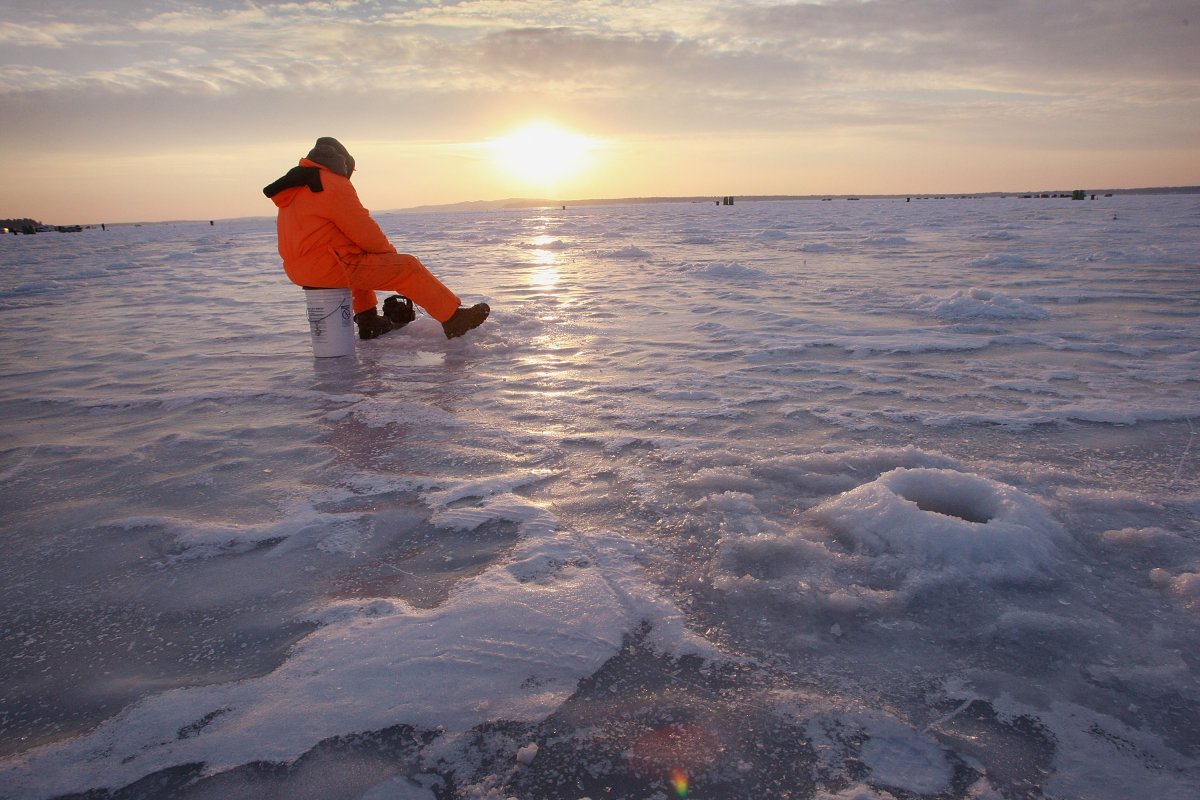More than 100 people were stranded on a large chunk of ice in a lake after it broke off in Minnesota on Monday, authorities said.
First responders were working to rescue the people, who were fishing off of the ice chunk into Upper Red Lake, the Beltrami County Sheriff's Office wrote in a Facebook post.
"We are working with other first responders to get an estimated 100+ people fishing off a large ice chunk that has broken free on Upper Red Lake. If you are on the ice and need to evacuate, head towards JR's Corner. There is a temporary ice bridge to get across the open water," the sheriff's office wrote.
By 2:37 p.m. local time, the sheriff's office determined that everybody who needed evacuation was successfully reached and brought back to land, the office wrote in an update. No injuries were reported.

Upper Red Lake is located in northern Minnesota, near the Red Lake Reservation. Temperatures in Red Lake were around 35 degrees Fahrenheit on Monday afternoon.
Red Lake is the largest lake located entirely inside Minnesota's borders, spanning 288,800 acres, according to Minnesota's Department of Natural Resources (DNR).
More information about the situation, including how far the ice shifted away from the land, remained unknown Monday afternoon.
Each year, icy winter weather carries the risk of potentially dangerous situations occurring throughout the United States, especially in northern areas where winter storms frequently bring freezing temperatures and large amounts of snow and ice.
Ice Safety Tips: Minnesota Officials Say Ice 'Never' 100% Secure
It remained unknown how thick the chunk of ice was, but the Minnesota DNR warns that ice is never 100 percent safe. It advises residents to completely stay off ice that is less than 4 inches thick. People should also avoid bringing cars onto ice that is not at least 9 to 12 inches thick.
"You can't judge the strength of ice just by its appearance, age, thickness, temperature, or whether or not the ice is covered with snow," the DNR website reads. "Strength is based on all these factors—plus the depth of water under the ice, size of the water body, water chemistry and currents, the distribution of the load on the ice, and local climatic conditions."
Anyone considering venturing onto the ice is advised to check its thickness using an ice chisel, ice auger, a cordless drill or tape measure, according to the DNR.
Unfortunately, each year people are injured or killed in ice-related accidents. In January, a man died after trying to rescue a 10-year-old girl who fell through ice in Illinois. In December 2021, Tor Eckhoff, a popular Norwegian YouTube creator, died after falling through ice while filming a video.
Update 11/28/2022, 4:40 p.m. ET: This article was updated with additional information.
Uncommon Knowledge
Newsweek is committed to challenging conventional wisdom and finding connections in the search for common ground.
Newsweek is committed to challenging conventional wisdom and finding connections in the search for common ground.
About the writer
Andrew Stanton is a Newsweek weekend reporter based in Maine. His role is reporting on U.S. politics and social issues. ... Read more
To read how Newsweek uses AI as a newsroom tool, Click here.








